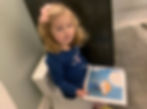8 Social Stories You Need for Autism Potty Training
- Autism-Talk
- Jun 25
- 7 min read
Updated: Jul 15

What are the best social stories to help autistic children with potty training?
Potty training can feel overwhelming—especially when your child is autistic and struggles with routines, sensory sensitivities, or anxiety. But the right support can make a big difference.
Social stories for potty training are a helpful tool that many parents and therapists use to help autistic children understand bathroom routines in a calm, reassuring way. These simple, visual narratives teach the steps and expectations—making unfamiliar tasks feel safer and
more predictable.
This post walks you through 7 key social stories that support toilet training for autistic children, with tips for using each one.
🧻 Table of Contents
✅ What You’ll Learn
Social stories help autistic children feel safer during potty training.
Each story targets a common challenge like flushing, wiping, or public bathrooms.
Visuals and calm, clear wording reduce anxiety and support independence.
Social stories can be repeated often to build comfort and routine.
Download a free mini social story to get started (linked below).
1. Understanding the Potty Process

How do I explain the potty routine to an autistic child?
This narrative should break down each step, including recognizing the need to go, walking to the bathroom, using the toilet, and flushing.
Incorporate visual aids alongside the narrative to enhance understanding.
Use simple illustrations for each step to help your child visualize the process, making it less intimidating.
For example, after reading the story a few times, you might hear your child say, "I can walk to the bathroom when I feel the need to go!" This indicates they’re starting to grasp the concept.
An example sentence might be: "When I feel like the pee needs to come out I hurry to the bathroom and sit on the toilet."
🖼 Tip: Add realistic visuals for each step to help your child picture what to expect.
Read the story together several times before practicing the routine.
2. Flushing the Toilet
What if my child is scared of flushing sounds?
For many children, the sound of the toilet flushing can be scary. Addressing this concern in a social story can help lower anxiety. Describe the flushing mechanism in a way that makes the sound less intimidating.
You might say, "Once I finish using the toilet, I can flush! The sound may be loud, but it helps keep the toilet clean." Studies show that familiarizing children with noises they fear can reduce their anxiety by up to 60%. Repeated exposure through storytelling reinforces this concept over time.
Enhance the narrative with sensory descriptions: "When I flush the toilet, it makes a loud whoosh sound, but that's okay! It's good for keeping the bathroom fresh."
📊 Did you know?
Research shows repeated exposure to feared sounds through gentle storytelling can reduce anxiety by up to 60%.
3. Handwashing After Using the Potty
How do I help my child learn to wash hands after the bathroom?
Handwashing after toilet use is crucial and should not be overlooked. A social story focused on this task can reinforce its importance as part of the potty training routine.
Clearly explain the steps involved: turning on the tap, using soap, and rinsing hands. You can encourage your child by saying, "After I use the potty, I wash my hands with soap and water. This keeps my hands clean and helps me stay healthy!"
🎵 Add a fun touch: Try a rhyme like “Rub-a-dub-dub, two hands in the tub!”
Adding elements of fun can make this task more engaging, such as a short rhyme.
4. Understanding Wiping
How can I teach my autistic child to wipe properly?
Many children may feel unsure about wiping. Having a dedicated social story that clarifies this step can help foster confidence.
You can frame the message positively: "After I use the potty, I need to wipe to keep my bottom clean.
I use toilet paper and wipe from front to back to stay safe and tidy."
Emphasizing the importance of this step in a clear way can make the task less daunting.
🌟 Tip: Normalize the process in a calm, matter-of-fact way, especially for children with anxiety or sensory challenges.
5. Peeing Standing Up or Sitting Down
Should I teach my child to sit or stand when peeing?
Being flexible around different ways to use the toilet may be difficult for many autistic children.
A social story should explain that sometimes they may pee while sitting but not always and it is ok when they have to pee standing up.
Use language that reassures them: "I can pee sitting down or standing up." This flexibility can encourage your child to feel comfortable with their choices during potty training.
💬 For kids who struggle with aim or motor coordination, sitting might be easier at first.
6. Managing Accidents
How do I help my child feel okay after an accident?
Accidents are a natural part of the potty-training process, so a social story addressing this aspect is essential.
Normalizing the experience can help alleviate any fears your child might have and may make them less resistant to wearing underwear if they realize that accidents are no big deal.
For example, you could say, "Sometimes, I might not make it to the potty in time. If I have an accident, it's okay. I can tell a parent or caregiver, and they will help me clean up. Everyone has accidents sometimes!" This message empowers your child by indicating that mistakes are a normal part of learning.
🧼 Keep a calm tone and include a visual of clean-up steps to reduce shame or stress.
7. Using New or Different Bathrooms
Why does my autistic child panic in unfamiliar bathrooms?
Using different environments, such as public restrooms or school bathrooms, can be intimidating. Craft a social story that prepares your child for what to expect in various settings.
Encourage exploration with statements like, "When I go to a new bathroom, it might look different from mine, but I still use the potty in the same way. I can ask a grown-up for help if I'm scared or unsure."
Including descriptions of a typical public bathroom can ease anxieties, as visuals help them prepare for what is to come. A visual aid showing what to expect can make all the difference.
🧭 Bonus tip: Use photos of public bathroom signs you often encounter such as the public library or grocery store in the story to help your child feel more prepared.
8. Transitioning from Diapers or Pull-Ups to Underwear

How do I help my autistic child switch from diapers to underwear?
This can be one of the most difficult parts of potty training for children who don't love change!
A social story can gently introduce the idea of wearing underwear, explain why it’s important, and reassure your child that it’s okay to feel nervous.
📘 Sample sentence:
“I used to wear diapers or pull-ups, but now I’m learning to wear underwear. Underwear means I use the potty to stay clean and dry.”
👕 Tip: Use photos or illustrations of different types of underwear to build interest. Letting your child choose fun designs (like favorite characters or colors) can make the transition feel exciting instead of scary.
Why Social Stories Help with Toilet Training
Using social stories not only helps to master the practical aspects of potty training but also builds the child’s confidence and understanding.
With patience, encouragement, and the right tools, potty training can become a positive experience for families. Equip your child with these narratives to enhance their ability to navigate this essential transition while fostering independence.
Remember, every child learns at their own pace, so embrace this journey together.
They can be read at transitions, rehearsed before new experiences, or sent home from school to reinforce routines.
📘 Looking for a complete support system?

Check out the Toilet Training Social Story Bundle featuring 16 editable stories that cover everything from accidents to school bathrooms.
🎁 Get Free Support Tools
Want to try before you buy?
Download this free printable:👉 Free Potty Training Mini Social Story Coloring Book
Perfect for home or classroom use.
🧩 You Might Also Like:
Final Thoughts
Potty training can be tough—but you don’t have to do it alone. By using targeted social stories and visual routines, you’re giving your child the clarity and confidence they need to succeed.
Whether you're just getting started or trying to overcome a hurdle like public bathroom fear or wiping independence, social stories can help make each step feel doable.
🌈 Every child moves at their own pace—just keep showing up with support and understanding. You’ve got tools that work.
%20(21).png)









